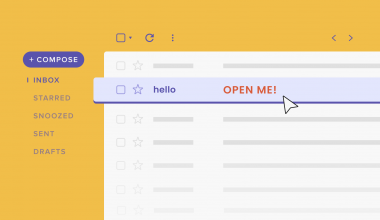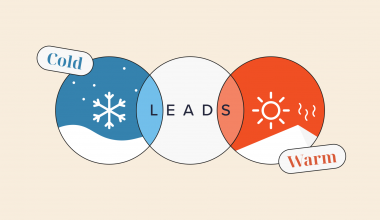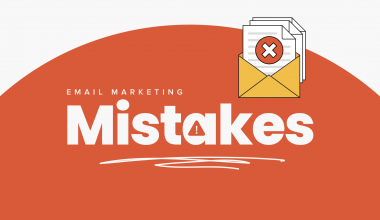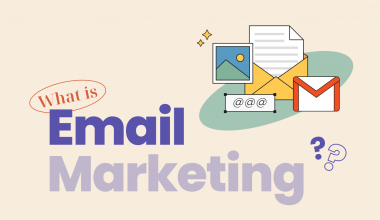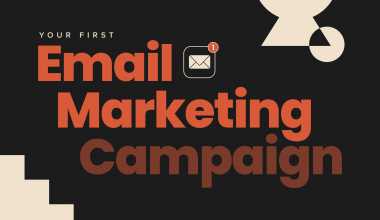In the world of Email Marketing, sending out a single email is never going to work. Sales and trust are co-related and they both take time and effort. That’s why Follow-up Emails are extremely important in building a successful relationship with your prospects.
First Emails can be easily overlooked, especially according to Uplead, after the first 24 hours after it’s sent, the chances of an opening drop below 1%. Follow-up Emails provide an opportunity for you to reach back out to your prospects and remind them of your existence.
Let’s take a look at 6 Guidelines on how to send successful Follow-up Emails.
1. Determine the objectives of your follow up
The very first thing you want to do before writing any kind of email is to determine your email’s purpose. For Follow-up Emails, it is crucial to know your objectives. Are you following up after an event or meeting? Or is it because you didn’t receive any response from them?
Your objective drives the email content you are curating and ultimately decides if your Follow-up Email is effective. Once you have your objective, you could start to think about ways to achieve it. This includes the kind of content you want to incorporate in the email that would attract the prospect.
2. Add Context
Your recipients wouldn’t remember all the emails they’ve ever received, so don’t try to hint at them regarding your last email. Instead, open your follow up email with a reminder of your previous email, and give them a brief context so they’re able to relate.
Some examples include:
- I’d like to follow up with you regarding the email I sent last [date] about [email subject]
- I’ve tried to reach out to you in regards to [email subject] but it seems like you’re busy…
3. Personalization
As we have mentioned, again and again, Personalization is the key to Email Marketing. Whether or not you could stand out among the crowded inbox depends on how you craft your subject line and email content with a personal touch.
So, you need to show your prospects that you know them and what they do. Make them feel like you’re treating them like actual humans instead of just names in the spreadsheet. Thus, your Follow-up Email should be personal and friendly.
4. Be direct and clear with your intentions
Don’t beat around the bush with your email intentions or include bombastic compliments. Send emails that are worth your prospect’s time to open and read.
You should explain the reason for your follow-up as direct and concise as possible. Preferably, you should also summarize your follow up objectives in the subject line so that your prospects could comprehend your email’s main point before clicking in.
5. Create an easy Call-to-action (CTA)
More than often, after recipients open and read the emails, the question that they would ask is “so what should I do now?” The call-to-action should not be complicated and troublesome. Avoid making it vague and ambiguous, the prospects will not spend the time to dissect what you want them to do.
Thus, try to make your CTA as straightforward and clear as possible. For example, if you are trying to arrange a meeting with your prospect, you could either:
- suggest a date and time – “Does 3 pm, Wednesday work for you?”
- ask them to book an appointment – “You may book an appointment with me here [include the link to your calendar]”
6. Find the sweet time to follow up
Imagine crafting the best follow up email but sending it out at the wrong time. Not only you’re wasting your time and effort, but you also didn’t make any impressions on your prospect as they overlook your email.
There is no right way to decide when to follow up because it is very subjective and varies between businesses. However, the general rule of thumb would be:
For B2B:
i) Avoid weekends, Mondays and Fridays
A common 9-5 employee wouldn’t touch their emails on weekends, so sending Follow-up Emails at those times is pointless. On Mondays, though, these employees would tend to filter their inboxes and delete irrelevant and unimportant emails. Therefore, sending Follow-up Emails on Mondays would risk getting deleted. Fridays are also not optimal as they are most certainly thinking about weekends and not in the right mood for new products or services.
ii) The best timings are Tuesdays, Wednesdays and Thursdays, between 10 am to 2 pm
iii) Whereas for entrepreneurs who open their email frequently, Saturdays at 10 am is the best time to follow up with them.
For B2C:
i) There is actually no big difference in the time you send. However, some studies have shown that the optimal performance for B2C email is on Saturday at 12 am.
Ultimately, you know your prospects best, so a trial-and-error experiment is inevitable. We advise you to discover the best sending time for your industry and business by testing out various timeframes.
Now that we have settled the best time to send emails, let’s talk about the frequency.
No one likes to be bombarded with 10 emails in a week, and your prospects definitely don’t too. Aggressively sending follow-up emails every day will only clog your prospects’ inboxes and lead them to label you as spam emails. And you don’t want this to happen, don’t you?
Generally, you should send a minimum of 5 Follow-up emails. After your first email, don’t follow up straightaway. Give your prospects 2 to 3 days to think about it. And then for the following emails, gradually prolong the time between them.
Here is a general Follow-up formula for B2B Cold Email Campaign:
- 1st follow-up: 2 days after the initial email.
- 2nd follow-up: 4 days after.
- 3rd follow-up: 7 days after.
- 4th follow-up 14 days after.
- 5th follow-up: 30 days after.
There you go! 6 guidelines for sending successful Follow-up Emails. If you are still feeling hesitant, take a look at “10 excellent follow-up emails for cold and warm leads” to get a gist of the types of follow-up emails.




